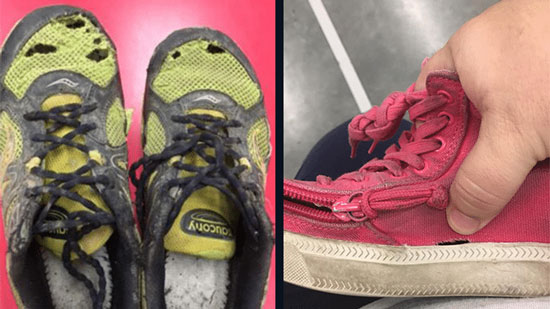How to Check If Your Kids’ Shoes Are Too Big for the AFOs – Follow This Simple Step
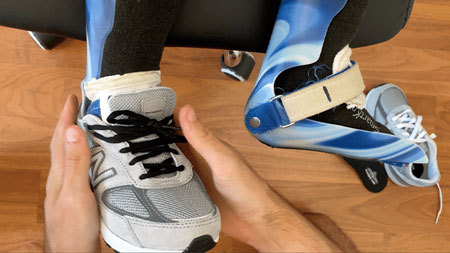
If you have read any of my previous articles about children’s shoes and AFOs, you probably should know by now how a properly fitting shoe is critical to the proper functioning of an Ankle Foot Orthosis (AFO). I have noticed how most parents buy shoes that are way too large to accommodate the AFOs, which compromises the child’s stability and makes the child more prone to develop foot issues such as blisters. I created this resource to show families how to check if their kids’ shoes are too big for the AFOs.
Your child’s functional mobility will be compromised if the shoes don’t fit the AFOs correctly. Shoes that are too large will allow the AFO to move excessively inside the shoes, and this might end up rubbing your child’s feet the wrong way leading to discomfort and blisters.
How to Check If Your Kids’ Shoes Are Too Big for the AFOs
➡️ Step Number 1
Remove the original insoles of your kids’ shoes and place your child’s AFO on top to check how much space there is between the end of the AFO footplate and the end of the shoes. Make sure that you align the end of the AFO with the end of the insoles and take a look at how much space there is between the end of the AFO footplate and the end of the insoles:
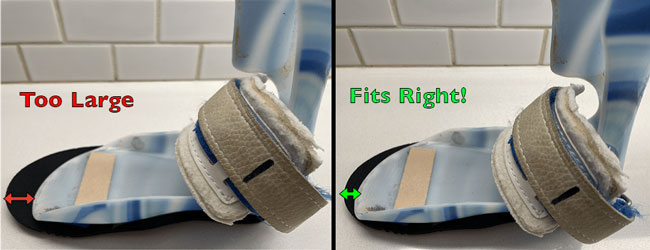
There should be some space between the end of the AFO footplate and the end of the shoes —approximately 3/8 of an inch or 0.8 centimeters— which translates to a full shoe size larger.
➡️ Step Number 2 (optional)
If you don’t have your child’s original shoe insoles you will have to slide your hand inside the shoes and feel whether there is excessive space between the end of the AFO footplate and the end of the shoes.
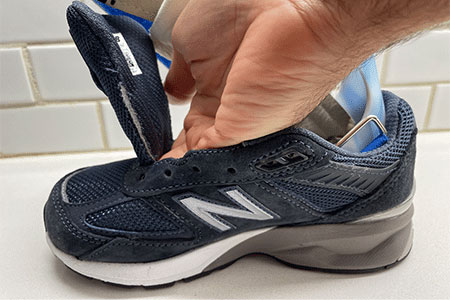
I created a resource to help parents determine what shoe size they should order to accommodate their child’s AFOs.
How to Order the Correct Size for Your Child’s AFOs?
If you are unsure about what shoe size you should order for your child’s AFOs I suggest that you follow the instructions below:
➡️ Step Number 1: Measure Your Child’s AFOs
Measure your child’s AFO brace from the back of the heel up to the front part of the brace as shown in the image below. You can either use a measuring tape or a ruler. Make note of that measurement and proceed to step number 2.
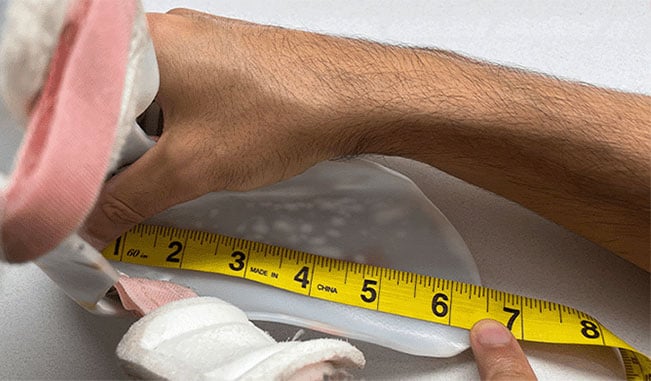
➡️ Step Number 2: Measure Your Child’s Foot Length
Measure your child’s feet while standing, as on weight-bearing the foot becomes longer.
Measure both feet up to the tip of your child’s longest toe. It’s imperative that you measure both feet since there is always one foot that is bigger than the other. Keep in mind that your child’s longest toe doesn’t necessarily have to be the big toe — it may in fact be the second or even the third toe.
Make a note of that measurement in centimeters or inches or email me the image showing the measurements (such as you see below) to avoid confusion with the measurements.

➡️ Step 3: Email Your Child’s Measurements
Email me your child’s feet and AFO measurements so I can tell you exactly what shoe size you should order for your child. Once I receive your child’s measurements I will respond in less than 24 hours:
Getting the correct shoe style in the correct shoe size is essential for your child to get the full benefits that the AFOs have to offer.
What Are the Best Shoes for Kids Who Wear AFOs?
I created a different resource that showcases the best everyday sneakers that can accommodate AFOs.
Getting the correct type of shoe in the correct size is important for a comfortable AFO fit, but the socks you buy matter, too! I have fitted certain socks that are specially designed to be worn with AFOs as they help prevent skin irritations and pressure over the toes. They also come with a non-binding Halo Top to minimize indentations.
Every family’s situation is unique when it comes to AFOs. Please do not hesitate to reach out with any questions via the comment section below or by email.


